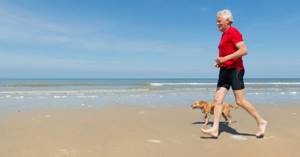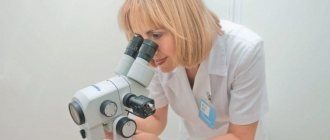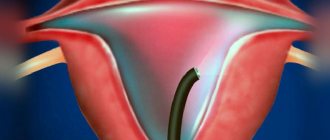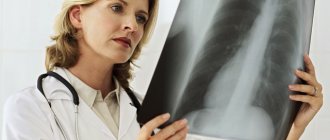A very important question for many is whether it will be possible to continue playing sports after chest surgery. Alpine skiing and snowboarding are sports in which falls are inevitable. It is important to understand that recovery of the body does not occur immediately. At first after the operation, you may feel very tired and weak; during the first month you should avoid any physical activity, limiting yourself to short walks around the city. And although sports are contraindicated for 3 months after surgery, complete recovery of the body occurs only after 6 months. Although much, of course, depends on the type of sport. We will definitely inform you about this during the consultation.
Some of our patients said that they were able to start playing sports (mainly athletic exercises) after 3 months, some after 5, some after 8. At the same time, some experienced pain, others did not. I would like to reassure everyone and say that there is no need to worry if something doesn’t work out yet. Everyone has different initial capabilities, different weights, different degrees of deformation, so many processes proceed differently and at different “speeds.”
I would like to once again draw attention to the importance of breathing exercises. They are not always given enough attention, but those who do do them note good, and sometimes truly impressive, results. Here is a review from one of our patients who managed to achieve really good results with these exercises:
“Two years ago I had an operation, but it had the opposite effect: my ribs began to protrude. To be honest, I didn’t really believe in the effectiveness of breathing exercises, but I decided to try, because I had nothing to lose... These exercises are simple and take no more than 5 minutes a day. Some time passed, and I began to notice changes for the better. After that I started studying more seriously. A little later I started swimming again and, in my opinion, this complements breathing exercises well. Changes occur very slowly and even in a few months it is difficult to notice the difference, but I can definitely say that, remembering the situation a year ago and now, a very noticeable result is visible, which makes me very happy. Of course, there is still work to be done, but I think it will get even better with time.”
The role of exercise therapy in postoperative recovery
After surgery, the body's ability to recover on its own is significantly reduced. Some surgical interventions, for example on the back or joints, necessarily require rehabilitation measures, otherwise there is a risk that the patient will never be able to return to normal life. In addition, without proper recovery, the likelihood of developing complications due to prolonged immobilization increases.
We are talking not only about physical complications (muscle atrophy, bedsores, pneumonia as a result of congestion), but also about psychological consequences. The patient, who a week ago could move and care for himself, is bedridden after the operation, and some motor functions are completely lost. The task of exercise therapy is to return a person to good physical condition and mental comfort. Therapeutic exercise not only restores motor activity, but also eliminates postoperative pain. The set of classes is aimed at:
— restoration of the functionality of the operated organ or system; — normalization of the functioning of surrounding tissues; - strengthening muscles to prevent atrophy; — restoration of full motor capabilities; — elimination of possible restrictions due to surgical intervention; - relief, and then complete elimination of pain; — stabilization of the condition after surgery; — removal of restrictions on physical activity.
When a patient is in a sedentary state for a long time, this negatively affects the functioning of internal organs and can disrupt the functions of the respiratory and cardiovascular systems, gastrointestinal tract, spine and large joints. Exercises under medical supervision restore metabolic processes in the body and have a beneficial effect on the central nervous system and lungs. Exercise therapy in the early stages prevents the development of contractures and muscle atrophy.
In the first 2-3 weeks of the postoperative period, physical therapy is limited to only basic movements, however, after the sutures are removed, the program is supplemented with:
— training on simulators; - stretching exercises; - exercises with rubber bands, balls, dumbbells and other equipment; - hydrokinesotherapy with the usual general developmental exercises and work on block devices, - walking, running, skiing.
Physical education increases blood supply to muscles subjected to stress, increases the strength and endurance of the muscular system, restores or increases the motor activity of joints. Breathing exercises, which also include relaxation techniques, help eliminate spasticity. As a result, the functioning of organs and systems is normalized, and the emotional tone of the patient improves. Exercises are selected taking into account the stage of the disease, the body’s reaction to surgery, the state of organs and systems not involved in the pathological process, the mental reaction to the intervention, as well as other individual factors.
Classification of sports by intensity
Each person has a different meaning for the concept of “playing sports.” For some people, sport is ten minutes of jogging a couple of times a month. For others, it's a weekly swim in the pool. And for others - one and a half hour games of hockey at least 2-3 times a week. In each of the three cases, the question will be the same: “Will I be able to play sports after endoprosthetics?” But the answer will be completely different.
Various sports are divided into three groups:
- professional;
- amateur;
- light physical activity (swimming, jogging, gymnastics).
Professional sports involve heavy stress on joints. While doing it, many professional athletes already at a young age are faced with deforming osteoarthritis of the knee or hip joint, which is why they actually have to undergo surgery. While in ordinary people who lead a moderately active lifestyle, arthrosis develops only after 60-65 years. Thus, playing sports is one of the main factors causing joint damage. They have no less detrimental effect on the endoprosthesis.
As for light physical activity, it is practically safe. Running, swimming and light exercise usually do not harm the joints or the installed implant. If only a person behaves carefully, does not make sudden movements, does not slip or fall.
Knee replacement in the Czech Republic: guarantees, prices, rehabilitation, reviews and statistics.
Find out more
Minimally invasive endoprosthetics in the Czech Republic: doctors, rehabilitation, terms and prices.
Find out more
Therapeutic exercise at different stages of rehabilitation
In order for physical therapy to bring maximum effect, it is important to start rehabilitation as early as possible. If the patient’s condition allows, it is possible to perform certain exercises the very next day after surgery, and continue recovery until stable results are achieved.
Therapeutic exercise can be used at all stages of rehabilitation: 1. Immobilization. It lasts from the completion of surgery until the stitches (or plaster cast) are removed. The duration of the immobilization stage depends on the type of operation, but rarely exceeds 2 weeks.
The list of rehabilitation measures includes breathing exercises to prevent pneumonia, preparing the patient for physical exercise, as well as a set of exercises themselves. At the initial stage, they consist only of weak muscle contractions, but as the condition stabilizes, the program becomes more complicated. Physiotherapeutic procedures are indicated 4-5 days after the intervention.
2. Post-immobilization. It begins after the stitches or plaster cast are removed and lasts up to 3-4 months. At this stage, the key attention is paid to increasing the range of movements, strengthening the muscular system and fascia, and eliminating pain. Physical therapy exercises and physiotherapy are the basis of rehabilitation measures.
Rehabilitation is carried out both in the hospital and after discharge. In a medical facility, recovery is based on high-intensity activities so that the patient can leave the clinic as soon as possible. In a hospital setting, physical therapy may include exercises on medical simulators, in water, as well as independent exercises in the ward. Exercise therapy methods are complemented by manual and physical therapy - electrophoresis, ultrasound and heat treatment.
The outpatient stage is also important: it is needed to consolidate the results obtained. The duration of this period ranges from 3-4 months to 3 years. On an outpatient basis, patients continue exercise in sanatoriums, medical clinics and specialized medical institutions. At the Quality of Life clinic you can undergo rehabilitation after surgical interventions of any complexity. We practice a multidisciplinary approach, involving the involvement of doctors of various specialties - osteopaths, physiotherapists, psychologists. The volume, intensity and algorithm of physical exercises are selected taking into account the rehabilitation potential of each patient. Regular physical exercise under the supervision of specialists with more than 15 years of experience restores joint mobility, strengthens the muscle corset, increases range of motion and has a beneficial effect on the body as a whole. The sooner the patient begins to engage in physical therapy, the higher the effectiveness of recovery will be.
However, physical exercise is only one component of comprehensive rehabilitation. Postoperative recovery includes many aspects to ensure quality results and return patients to their normal lifestyle as quickly as possible. Our specialists are fluent in active and passive techniques (PNF, Vojta therapy, PIR, MFR, massage, kinesiotaping, kinesitherapy, stretching, Neurac, REDCORD), which allows us to engage in rehabilitation both in the earliest stages after surgery and in particularly advanced cases. cases.
How long to wear compression garments after abdominoplasty?
Compression garments are special items of underwear that support the operated soft tissues. The products are made from elastic but breathable fabrics, so they are comfortable and free from diaper rash. The essence of compression garments is that, covering a certain area of the body, it creates uniform and constant pressure on it from all sides. This provides abdominal support and improves blood circulation, which speeds healing. Pressure numbers vary between 17-20 mmHg. Art., which is enough to preserve the silhouette modeled by the surgeon. The linen reduces swelling and general discomfort, stabilizes tissue during the healing period. When swelling disappears, the main function of underwear remains to support the abdomen. According to patient reviews, if you do not wear compression garments, persistent pain persists in the first weeks after surgery.
Main advantages of linen:
- effective support;
- beneficial overall effect on the healing process;
- bandages and bandages are hidden underneath, they will not move or get dirty, which means there will be no infection;
- the applied pressure accelerates the scarring process;
- pressure uniformity reduces the risk of hypertrophic and keloid scars;
- One of the recommendations after abdominoplasty is diet, and underwear that puts pressure on the stomach helps control satiety.
For the first 10-14 days, compression garments cannot be removed around the clock. During the first month after abdominoplasty, if it is not possible to wear another set while washing and drying clothes, then you need to be in a horizontal position all this time.
How long to wear a bandage after abdominoplasty?
In the first two weeks - constantly. Then you can remove it while washing or washing/drying the set. In general, how long you will need to wear a corset after abdominoplasty is determined individually. On average it is 1.5-2 months.
Features of exercise therapy after different types of operations
Doctors at the Quality of Life clinic have developed unique proprietary physical therapy programs after various types of surgical interventions, including: - Cardiac interventions , including on the heart and coronary vessels. Without cardiac rehabilitation and special classes, more than 40% of patients return to angina, 35% have decreased performance, and over 7% become disabled. Every 4th person goes under the knife again, every 3rd person can no longer work in their profession, and every 12th person is permanently confined to a wheelchair. — Interventions on the abdominal organs. They are carried out for diseases and injuries of the liver, stomach, spleen, and intestines. It is very important for such patients to ensure full physical activity to prevent complications (including congestive pneumonia, atelectasis, intestinal atony, thrombosis and embolism), prevent adhesions and improve heart function. — Orthopedic surgeries , including on the spine, knee, shoulder, hip and other joints. In such cases, exercise therapy serves as the basis for restoring lost functions and anatomical mobility. Without physical therapy, rehabilitation slows down, and in some cases, the results of treatment disappear altogether. — Operations for brain injuries – contusions, subarachnoid hemorrhage, bruises. Classes are required after the patient’s condition has stabilized and the patient has already completed the initial treatment. Systematic implementation of physical exercises according to a personally designed program improves the functioning of all systems, resulting in a decrease in pain, muscle weakness and spasticity. — Gynecological interventions , including laparoscopic, hysteroscopic, abdominal and reconstructive. Therapeutic exercises are an effective means of preventing adhesions, strengthen the anterior abdominal wall and pelvic floor muscles, restore organ function and increase the physical performance of patients. — Interventions on the mammary gland , including mastectomy. After such interventions, women may develop scar contractures, impaired blood supply and lymph circulation. This is due to both direct damage to blood vessels and tissue fibrosis. In addition, surgical intervention inhibits regenerative functions in tissues and also changes the functional state of the homeostasis system.
After heart interventions, physical therapy includes a set of special exercises for correct posture, shoulder girdle, chest relaxation and general relaxation. Classes can begin 7-8 hours after the end of anesthesia. Attempts at coughing, abdominal breathing, and static breathing exercises are indicated. On the second day, the complex can already be supplemented with movements of the neck, arms and legs. After 3 days, bending the legs at the knees, abducting the arms and inflating balloons is allowed. On the 5th day the patient can already sit in bed, and on the 15th day he can get up. The movements are performed sitting or standing. After discharge, patients are shown light running, moderate physical activity, alternating with breathing exercises. In this case, the pulse rate should not exceed 130 beats/min. The entire course of physical therapy after cardiac surgery is aimed at reducing the risk of heart attack, preventing the risks of angina pectoris and preventing relapses.
After abdominal interventions, all bedridden patients should perform breathing exercises to prevent congestion and pneumonia, especially if the duration of forced immobilization increases. At the first stages, physical therapy is carried out in a lying position, and only after the stitches begin to heal - in a sitting and standing position. The effectiveness of physical therapy is enhanced by manual therapy, therapeutic diets and various physiotherapy procedures - magnetotherapy, ultraphoresis, electrical stimulation and ultrasound. Ultraphonophoresis, for example, quickly eliminates inflammation, which relieves pain and prevents tissue destruction.
After surgical operations on the musculoskeletal system, exercise therapy also allows for complete recovery or stable remission. In particularly advanced cases, when it is no longer possible to fully recover, physical therapy significantly slows down the progression of pathological processes. Regular exercises strengthen the muscle corset, bones and ligaments, restore the anatomical structure of bones and joints, eliminate compression of nerve roots, relieve or completely eliminate pain, normalize tissue metabolism and improve mobility. After interventions for listhesis and retrolisthesis, physical therapy strengthens the back muscles, as a result of which the normal position of the vertebrae is restored and their re-displacement is prevented.
Pool
Swimming in the pool is not only allowed, but even recommended after knee/hip replacement. And special water gymnastics are even included in the rehabilitation program. Therefore, people who love swimming can be completely calm. After endoprosthetics, they definitely won’t have to give up their favorite physical activity.
You can use the pool as soon as the stitch heals.
Contraindications
An incorrectly designed exercise therapy regimen can seriously worsen the condition. For example, with dystrophic or degenerative pathologies of the joints and spine, as well as with diseases of the muscular system of the back, excessive physical activity and exercises with sharp jerks accelerate the wear of cartilage and bone tissue. Therefore, only the doctor should draw up a strategy for recovery after surgery after studying the medical history, the characteristics of the intervention performed and a complete examination of the patient.
Therapeutic exercise is contraindicated for: - embolism and thrombosis; — intoxication of the body; - presence or increased risk of bleeding; — oncopathologies in the acute stage; - hypertension. Absolute contraindications also include acute and subacute stages of disease, severe pain and elevated body temperature.
Run
Jogging after surgery is fairly harmless and is generally okay to do. However, it is important not to overdo it. When running, it is better to take small steps, minimizing the “flight phase”. In this way, the operated joint will be less injured when the leg collides with the ground.

If possible, it is better to replace running with walking, in which there is no “flight phase” and sudden jolts. It will be much safer.
FAQ
Is physical therapy prescribed for hypertension?
Physical activity for arterial hypertension should be selected in accordance with the patient's condition, the stage of postoperative recovery and the type of surgery performed. Patients suffering from high blood pressure are selectively prescribed a course of exercises.
They strengthen the body, improve the functioning of the central nervous system, cardiovascular and other systems. physical therapy normalizes motor-vascular reflexes and vascular tone, improves metabolic processes in the body.
Can pregnant women do physical therapy?
Pregnant women, as a rule, undergo only urgent and emergency interventions. After such a procedure, you can exercise, but the training regimen should be prescribed exclusively by a doctor.
Different training plans are recommended for different trimesters; it is extremely important to correctly select and dose physical activity and avoid overwork.
Is physical therapy allowed for diabetes?
Methods of physical therapy are indicated for diabetes types 1 and 2. Performing physiologically correct and correctly selected movements not only enhances the effect of insulin, but also makes it possible to reduce its dosage.
Therapeutic exercise has proven effectiveness in the fight against muscle weakness and adynamia - frequent companions of diabetics. If the patient is overweight, physical therapy helps normalize fat metabolism and reduces fat deposition.
What about home workouts?
You can practice at home, but you should start only under the supervision of a rehabilitation medicine specialist. Postoperative muscle trauma does not reliably identify the extent of disorders, so the doctor must determine the duration and intensity of the training. The specialist should also teach the patient the correct technique for performing movements and give recommendations for exercises at home.








